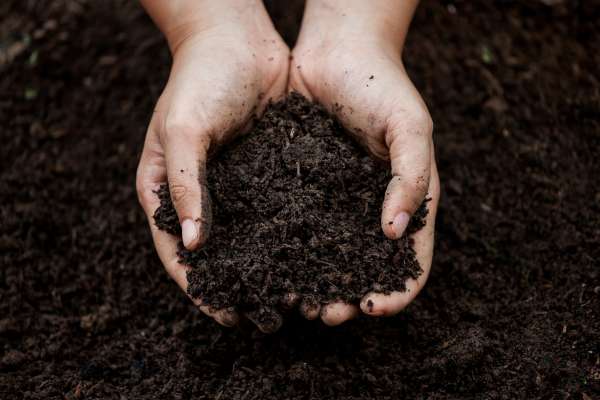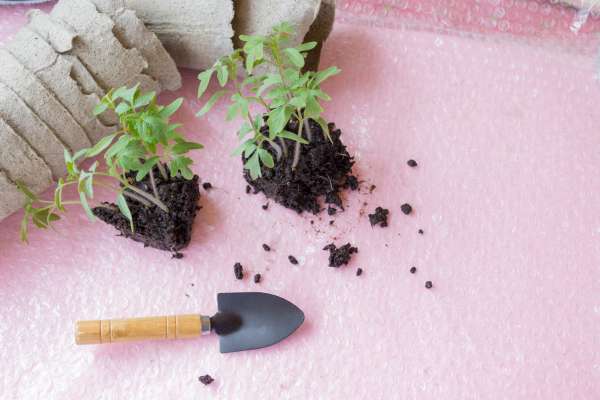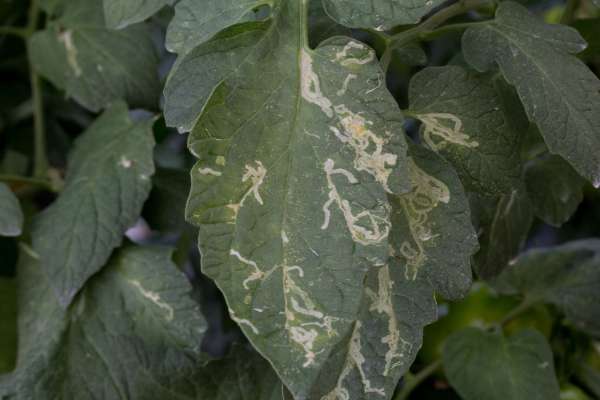Cherry tomatoes are a popular type of tomato that is known for its small, sweet fruit. Cherry tomatoes can be grown in the ground, in raised beds, or in containers. They are a relatively easy crop to grow, and they can be productive even in small spaces.
In this article, I am going to talk about all of the A to Z things you need to know about how to grow cherry tomatoes. Plus, you have some bonus tips! Keep reading this with me.
Table of Contents
How to prepare soil for cherry tomatoes?

Cherry tomatoes need well-drained soil that is rich in organic matter. To prepare the soil for cherry tomatoes, you can add compost, manure, or other organic matter to the soil. You can also test your soil to determine its pH level. Cherry tomatoes prefer slightly acidic soil with a pH of 6.2 to 6.5. If your soil is too alkaline, add sulfur to lower the pH.
Here are some specific tips for preparing the soil for cherry tomatoes:
- Till the soil to a depth of at least 12 inches. This will help to loosen the soil and improve drainage.
- Add compost or other organic matter to the soil. This will help to improve the soil structure and fertility.
- Test the soil pH and adjust it if necessary. Cherry tomatoes prefer slightly acidic soil with a pH of 6.2 to 6.5. If your soil is too alkaline, you can add sulfur to lower the pH.
- Fertilize the soil with a balanced fertilizer. This will help to ensure that the cherry tomato plants have the nutrients they need to grow and produce fruit.
But before doing any of soil preparation we have to decide a spot to grow cherry tomatoes. Because sunlight is an essential fact when you trying to grow any kind of plant that bears fruit.
Here’s the recommended way of selecting a location to grow cherry tomatoes.
Select a sunny spot in your garden with well-drained soil. Cherry tomatoes require at least 6-8 hours of direct sunlight each day for optimal growth and fruit production.
Is it good to grow cherry tomatoes in containers?
Yes, cherry tomatoes can be grown successfully in containers. When choosing a container for cherry tomatoes, make sure that it is at least 12 inches deep and has drainage holes in the bottom. Use a potting mix that is specifically designed for tomatoes.
Here is a perfect 12-inch plastic planting container with drainage holes in the bottom. You can purchase it on Amazon!
Here are some additional tips for growing cherry tomatoes in containers:

- Choose a container that is large enough for the cherry tomato plant to grow to maturity. Cherry tomato plants can grow to be 3 to 6 feet tall.
- Use a potting mix that is specifically designed for tomatoes. These potting mixes are formulated to provide the nutrients and drainage that cherry tomato plants need.
- Water cherry tomato plants regularly. Cherry tomato plants need about 1 inch of water per week.
- Fertilize cherry tomato plants every two weeks with a balanced fertilizer.
- Provide support for cherry tomato plants. Cherry tomato plants can grow quite tall and bushy, so it is important to provide them with support. You can use a tomato cage, trellis, or stake to support your cherry tomato plants.
To start cherry tomato seeds, sow them indoors 6 to 8 weeks before the last frost date in your area. Sow the seeds 1/4 inch deep in seed starting mix. Keep the soil moist and warm until the seeds germinate.
Once the seedlings have emerged, thin them out so that there is one seedling per pot. Transplant the seedlings outdoors after the last frost date. Harden off the seedlings before transplanting them by gradually exposing them to outdoor conditions.
When transplanting cherry tomato seedlings, plant them 24 to 36 inches apart. Space the rows 36 to 48 inches apart.

Here are some additional tips for starting cherry tomato seeds and transplanting:
- Use high-quality cherry tomato seeds. You can purchase cherry tomato seeds from your local garden center or online.
- Sow the cherry tomato seeds in the seed starting mix. Seed starting mix is a lightweight, well-draining mix that is ideal for starting seeds.
- Keep the soil moist and warm until the seeds germinate. You can use a heat mat to help keep the soil warm.
- Thin out the seedlings so that there is one seedling per pot. This will help to ensure that the seedlings have enough room to grow.
- Harden off the seedlings before transplanting them outdoors. This will help to prevent the seedlings from going into shock when they are transplanted.
- Water the seedlings well before transplanting them. This will help to reduce the stress of transplanting.
Fertilizing cherry tomatoes
Cherry tomatoes need regular fertilization to produce fruit. Fertilize cherry tomatoes every two weeks with a balanced fertilizer. You can also use a fertilizer that is specifically designed for tomatoes.
Here are some additional tips for fertilizing cherry tomatoes:
- Apply the fertilizer to the soil around the cherry tomato plants. Avoid applying the fertilizer directly to the leaves of the plants.
- Water the cherry tomato plants after applying the fertilizer. This will help to move the fertilizer into the soil.
- Be careful not to overfertilize the cherry tomato plants. Overfertilization can damage the plants and reduce fruit production.
Watering requirements and techniques for cherry tomatoes

Cherry tomatoes need regular watering. Water cherry tomatoes deeply once a week. During hot weather, you may need to water cherry tomatoes more often.
To water cherry tomatoes, water at the base of the plant. Avoid watering the leaves of cherry tomatoes, as this can lead to fungal diseases.
Here are some additional tips for watering cherry tomatoes:
- Water cherry tomatoes deeply. This will help to encourage the roots to grow deep into the soil.
- Water cherry tomatoes consistently. Avoid letting the soil dry out completely between waterings.
- Water cherry tomatoes in the morning. This will help to reduce the risk of fungal diseases.
- Mulch around the cherry tomato plants to help keep the soil moist.
Caring for cherry tomatoes
Now, we are going to discuss how you can take care of your cherry tomato plants while you are growing.
This will contain information on harvesting cherry tomatoes, pests and diseases
When and how to harvest cherry tomatoes?
Cherry tomatoes are typically ready to harvest 60 to 90 days after transplanting. To harvest cherry tomatoes, simply pluck the fruit from the vine.
Here are some additional tips for harvesting cherry tomatoes:
- Harvest cherry tomatoes regularly. This will help to encourage the plants to produce more fruit.
- Harvest cherry tomatoes when they are ripe. Ripe cherry tomatoes will be red and firm.
- Harvest cherry tomatoes carefully to avoid damaging the plants.
- Store cherry tomatoes in a cool, dark place.
Kinds of pests and diseases for cherry tomatoes

Cherry tomatoes are susceptible to a number of pests and diseases. Some of the most common pests and diseases for cherry tomatoes include:
- Aphids: Aphids are small, green insects that suck the sap from plants. Aphids can cause cherry tomato plants to wilt and yellow.
- Hornworms: Hornworms are large, green caterpillars that can defoliate cherry tomato plants.
- Blossom end rot: Blossom end rot is a physiological disorder that causes the bottom of cherry tomatoes to turn black and leathery. Blossom end rot is caused by a lack of calcium in the soil or by irregular watering.
- Early blight: Early blight is a fungal disease that causes brown spots on the leaves of cherry tomato plants. Early blight can also cause cherry tomatoes to rot.
- Late blight: Late blight is a fungal disease that causes black spots on the leaves and fruit of cherry tomato plants. Late blight can also cause cherry tomatoes to rot.
How to protect cherry tomatoes from pests and diseases
There are a number of things you can do to protect cherry tomatoes from pests and diseases.
- Inspect your cherry tomato plants regularly for pests and diseases. If you see any pests or diseases, take steps to control them immediately.
- Use insecticidal soap or neem oil to control aphids and other soft-bodied pests.
- Handpick hornworms and other large pests.
- Water cherry tomato plants deeply and regularly to help prevent blossom end rot.
- Apply a fungicide to cherry tomato plants to help prevent early blight and late blight.
Here are some additional tips for protecting cherry tomatoes from pests and diseases:
- Choose resistant varieties of cherry tomatoes. There are a number of varieties of cherry tomatoes that are resistant to pests and diseases.
- Plant cherry tomatoes in a sunny spot. Cherry tomatoes are less likely to develop pests and diseases when they are grown in a sunny spot.
- Avoid overhead watering. Overhead watering can spread pests and diseases.
- Remove diseased leaves and fruit from the cherry tomato plants. This will help to prevent the spread of pests and diseases.
- Keep the garden area clean and free of weeds. Weeds can attract pests and diseases.
Conclusion
Cherry tomatoes are a delicious and easy-to-grow crop. By following the tips above, you can grow a bountiful harvest of cherry tomatoes all season long.
Additional tips for growing cherry tomatoes
- Pinch out the suckers. Suckers are small shoots that grow between the main stem and the branches of a cherry tomato plant. Pinching out the suckers will help to encourage the plant to produce more fruit.
- Mulch around the cherry tomato plants. Mulch will help to keep the soil moist and suppress weeds.
- Harvest cherry tomatoes regularly. This will help to encourage the plants to produce more fruit.
- Enjoy your cherry tomatoes fresh, canned, or frozen! Cherry tomatoes can be eaten fresh, canned, or frozen. They are a versatile ingredient that can be used in a variety of dishes.
